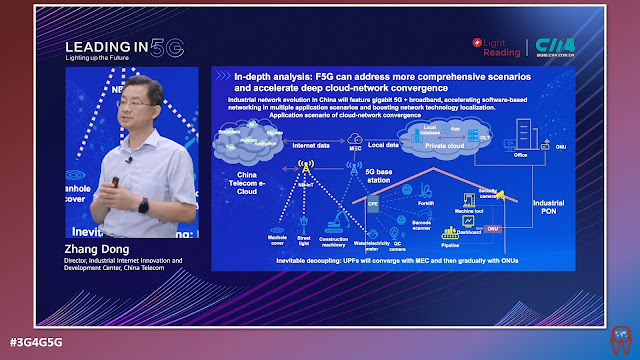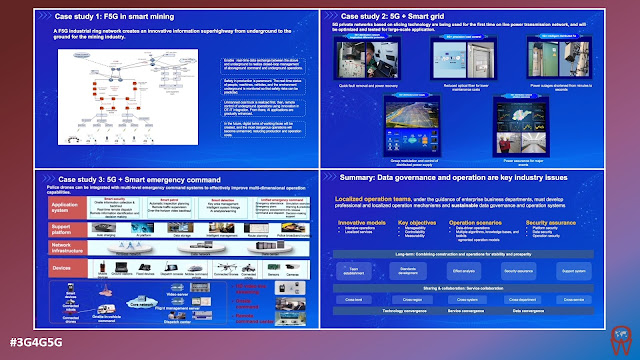Last year, Zhang Dong, Director, Industrial Internet Innovation and Development Center, China Telecom, spoke at at Light Reading’s Leading in 5G webinar series.
He said China Telecom began trials three years ago with half a dozen early adopter clients.
The base station cost was mostly paid for by the enterprises, while China Telecom sold O&M services and applications on top including big data, AI, and so on, he said.
While we see challenges like how to ensure lower latency and higher network assurance, and deal with problems like jittering, or how to simultaneously deliver 8K HD video from eight cameras, China Telecom is still making important milestones on its 5G journey.
Zhang said that after deploying more than 1000 5G use cases, China Telecom experts have identified four key categories.
The first is using 5G to enable high-speed mobility, with applications such as autonomous driving, remote control of vehicles or remote management of ports and warehouses.
The second type is those leveraging the faster 5G uplinks and downlinks. This is mostly related to video and in the future will also include various other integrated media, like AR and VR, Zhang said.
The third type of 5G use case focuses on scenarios where people and things gather, such as transportation hubs, and places with large number of people or large objects moving around.
The fourth type is deployment of 5G in hazardous environments. For example, some working environments might expose personnel to toxic gas, loud noise or other safety hazards. 5G can play an important role in ensuring safety.
Zhang cited some of China Telecom’s collaborations in the resource and utility sectors.
One was with oil and gas giant Sinopec, which was one of the first to trial 5G because it was willing to pay for the base station rollouts and services.
Another was the Shendong Coal Group in the mining sector, which had worked with China Telecom to roll out private networks under the wells, requiring investment of over 100 million yuan ($15.6 million).
China Telecom had also partnered with Qingdao Power Grid in a project where network slicing ensured the connectivity and lower latency to support precision power distribution.
We have looked at Fixed 5G (F5G) in our blog posts here and here. During the talk, Zhang also discussed F5G.
He highlighted that in F5G, there's a F before 5G where this F stands for fiber connection. Fiber connections and 5G joining hands will usher in another wave of technological innovations with 5G. Base stations already need fiber for data transmission, etc. These connections can be extended to OT industry, which would mean that the fiber connection can be used to control robots, etc. If fiber connections are deployed together with 5G, mining and other use cases in verticals will emerge in addition we know do today.
The video of his talk is embedded below:
Related Posts:
- The 3G4G Blog: The Fifth Generation Fixed Network (F5G)
- Connectivity Technology Blog: ETSI's F5G ISG releases Fixed 5G (F5G) Technology Landscape Specifications
- The 3G4G Blog - China Telecom: An examination of the current industrial trends and an outlook of 6G
- The 3G4G Blog: Real-life 5G Use Cases for Verticals from China
- Operator Watch Blog: World's Largest Mobile Networks by Data Traffic - March 2021
- Operator Watch Blog: China Telecom's 5G and IoT Progress
- Operator Watch Blog: Top 20 Telcos Worldwide in Q3 2020, Based on Capex by MTN Consulting
- The 3G4G Blog: 3GPP's 5G-Advanced Technology Evolution from a Network Perspective Whitepaper



No comments:
Post a Comment